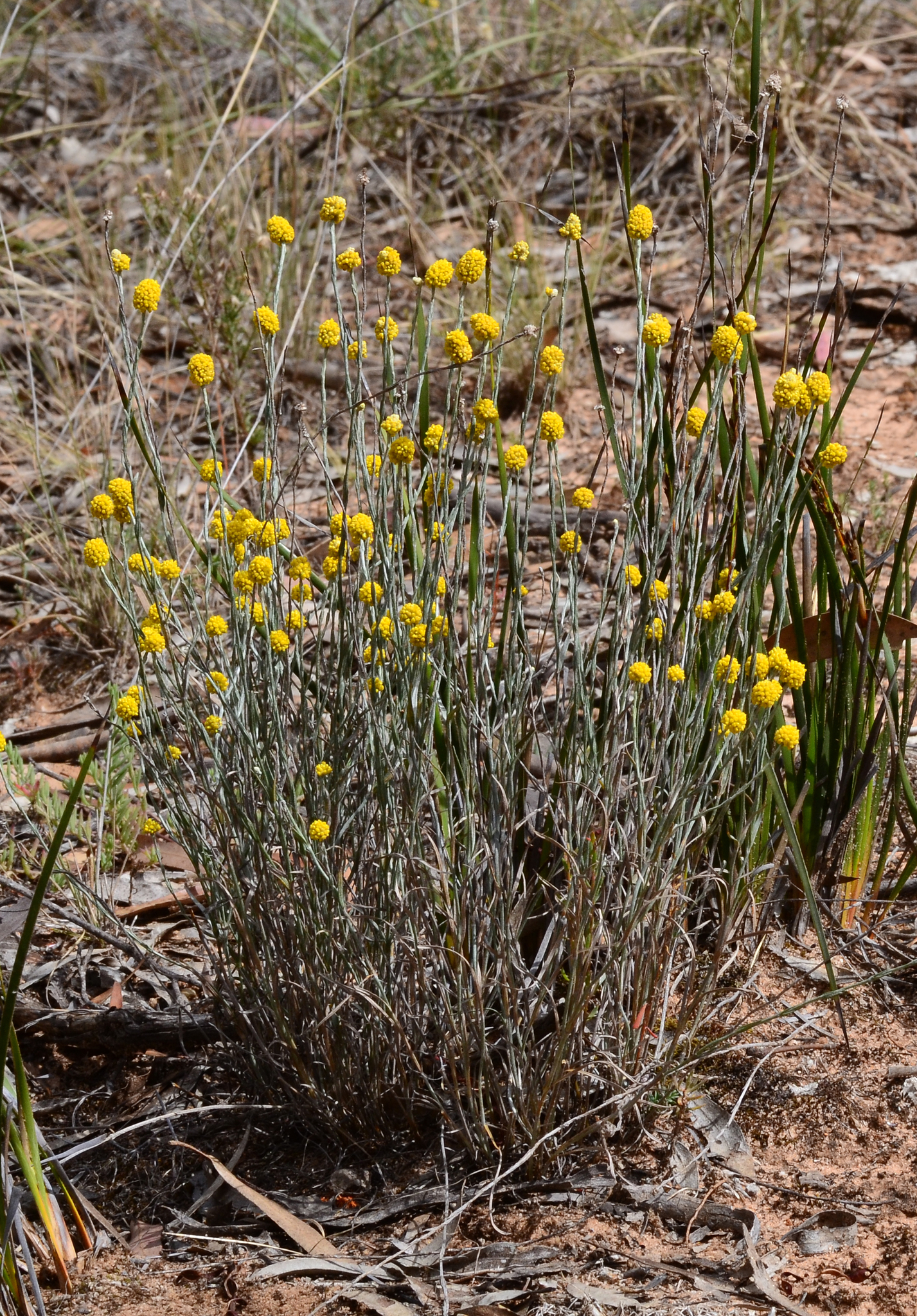
Greek kalos — beautiful, kephale — head, an allusion to the colourful compound heads.
Annual or perennial herbs, hairy. Stems erect or ascending, branching. Leaves along stems, opposite or alternate, entire, sessile. Capitula diskoid, few-flowered, usually 20-300 grouped together in dense terminal compound heads sometimes surrounded by an inconspicuous common involucre. Involucral bracts in 2 or 3 overlapping rows, the apex often yellowish. Common receptacle glabrous or hairy, spherical to cylindrical, entire or branched. Florets bisexual, yellow. Achenes obovoid, glabrous, hairy or warty. Pappus of feathery bristles or narrow scales.
A few species are occasionally found in cultivation as edge plants or in rockeries. The following species are available periodically from nurseries: C. lacteus Less. from SE Australia, a woolly erect or ascending perennial herb to 70 cm tall with opposite leaves and white involucral bracts; C. platycephalus (F. Muell.) Benth. from N Australia, a white-woolly erect or ascending annual herb to 45 cm tall with alternate leaves and pale yellow involucral bracts; and C. sonderi F. Muell. from E Australia, a grey- to silvery-woolly erect or ascending annual herb to 50 cm tall with alternate leaves and yellow to orange or whitish involucral bracts.
Capitula in dense compound heads; all florets bisexual; involucral bracts with coloured tips.
About 11 species from Australia.
Source: (2002). Asteraceae. In: . Horticultural Flora of South-eastern Australia. Volume 4. Flowering plants. Dicotyledons. Part 3. The identification of garden and cultivated plants. University of New South Wales Press.
